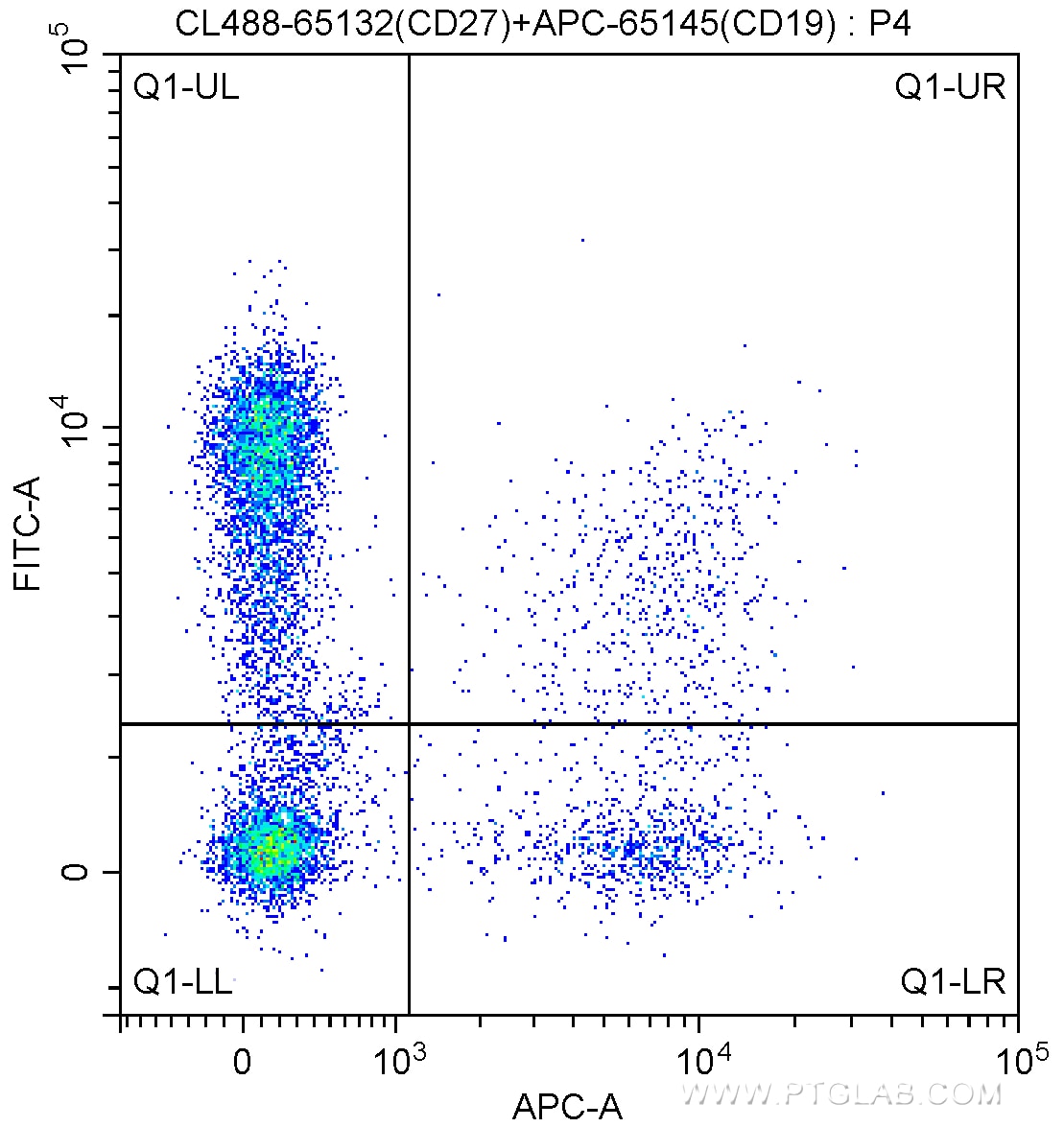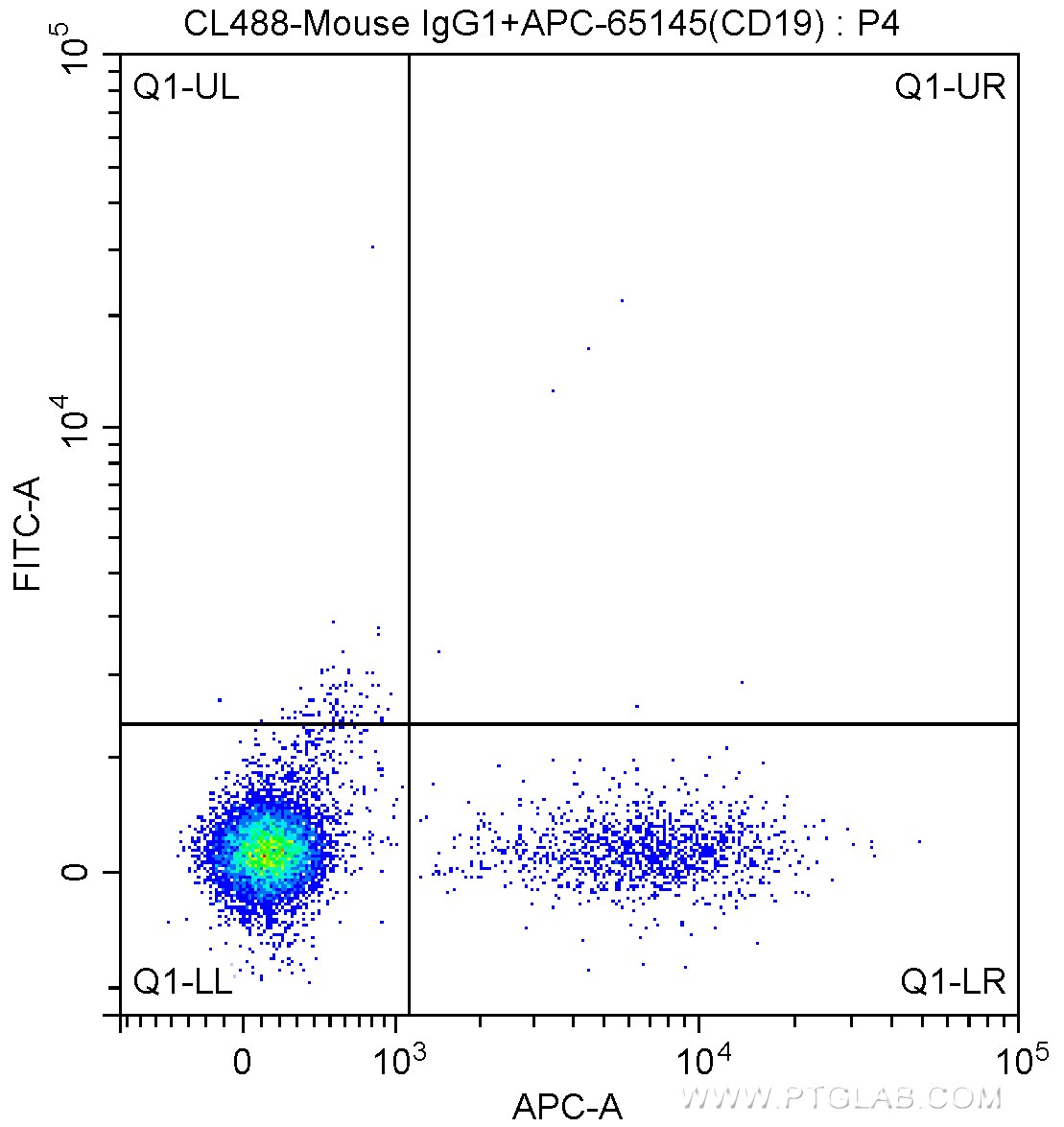CD27 Monoklonaler Antikörper
CD27 Monoklonal Antikörper für FC
Wirt / Isotyp
Maus / IgG1
Getestete Reaktivität
human
Anwendung
FC
Konjugation
CoraLite® Plus 488 Fluorescent Dye
CloneNo.
O323
Kat-Nr. : CL488-65132
Synonyme
Galerie der Validierungsdaten
Geprüfte Anwendungen
| Erfolgreiche Detektion in FC | humane Lymphozyten aus peripherem Blut |
Empfohlene Verdünnung
| Anwendung | Verdünnung |
|---|---|
| This reagent has been pre-titrated and tested for flow cytometric analysis. The suggested use of this reagent is 5 µl per 10^6 cells in a 100 µl suspension or 5 µl per 100 µl of whole blood. | |
| Sample-dependent, check data in validation data gallery | |
Produktinformation
CL488-65132 bindet in FC CD27 und zeigt Reaktivität mit human
| Getestete Reaktivität | human |
| Wirt / Isotyp | Maus / IgG1 |
| Klonalität | Monoklonal |
| Typ | Antikörper |
| Immunogen | k.A. |
| Vollständiger Name | CD27 molecule |
| Berechnetes Molekulargewicht | 29 kDa |
| GenBank-Zugangsnummer | BC012160 |
| Gene symbol | CD27 |
| Gene ID (NCBI) | 939 |
| Konjugation | CoraLite® Plus 488 Fluorescent Dye |
| Excitation/Emission maxima wavelengths | 493 nm / 522 nm |
| Form | Liquid |
| Reinigungsmethode | Affinitätsreinigung |
| Lagerungspuffer | PBS mit 0,1% Natriumazid und 0,5% BSA, pH 7,3. |
| Lagerungsbedingungen | Bei 2-8°C lagern. Vor Licht schützen. |
Hintergrundinformationen
CD27 (also known as TNFRSF7) is a type I glycoprotein expressed on some B cells and the majority of T cells, and is a member of the tumor necrosis factor (TNF) receptor family. CD27 is required for generation and long-term maintenance of T cell immunity (PMID: 11062504). It is a receptor for CD70 (CD27L). Ligation of CD27 by CD70 induces strong ubiquitination of TRAF and the activation of both canonical and non-canonical NF-kappaB pathways, as well as the JNK pathway (PMID: 19426224). CD27 may also play a role in apoptosis through association with SIVA1.
Protokolle
| Produktspezifische Protokolle | |
|---|---|
| FC protocol for CL Plus 488 CD27 antibody CL488-65132 | Protokoll herunterladen |
| Standard-Protokolle | |
|---|---|
| Klicken Sie hier, um unsere Standardprotokolle anzuzeigen |



